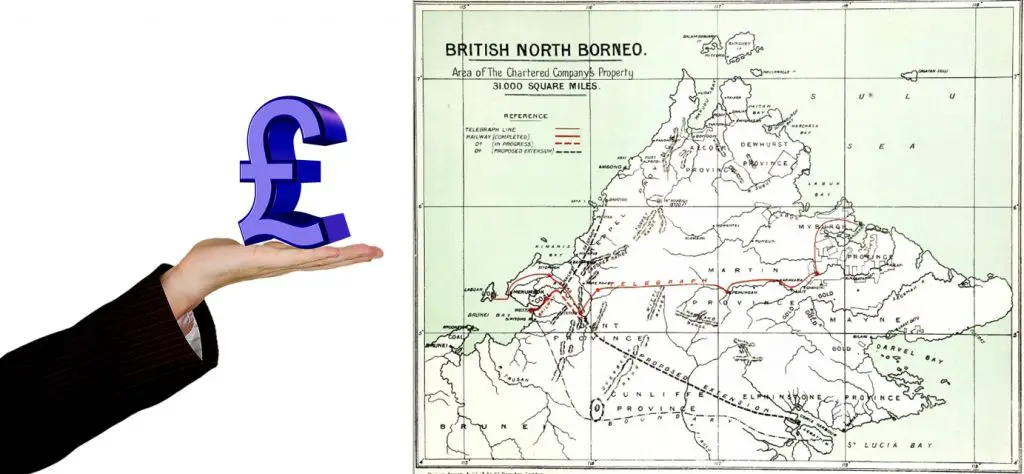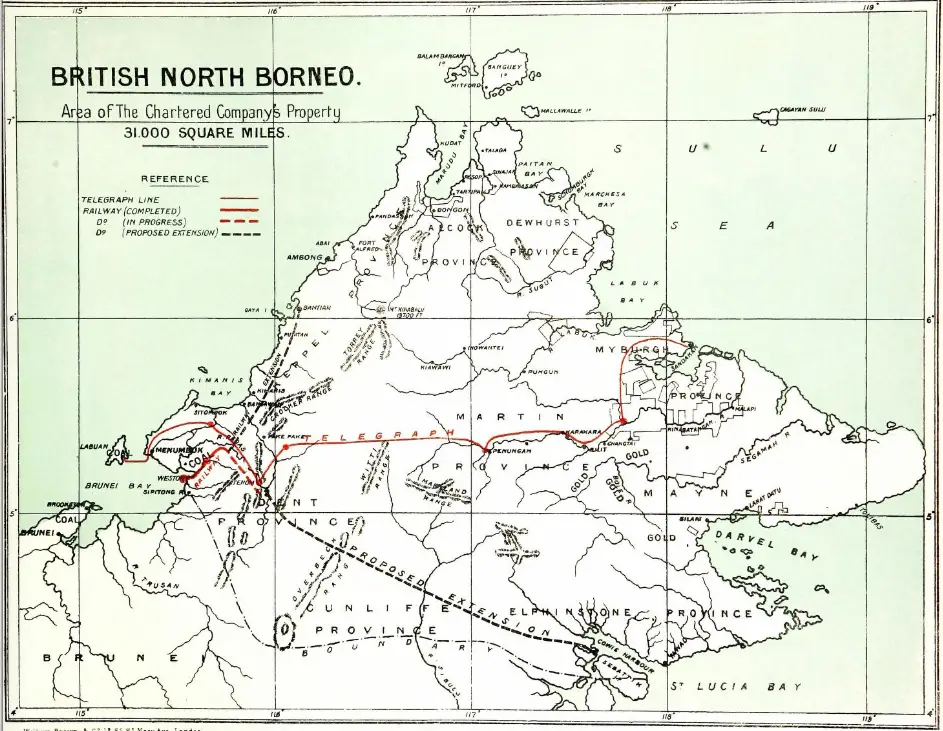Do you know that there was a so-called rescue plan for the Sandakan Death Marches code-named Operation Kingfisher?
The death march was a series of forced marches in Borneo from Sandakan to Ranau which resulted to the deaths of 1,047 prisoners-of-war (POWs). Meanwhile, the remaining 1,381 never left the Sandakan camp and died there.
If there was a rescue plan, how come the prisoners were never rescued?
Operation Kingfisher and Operation Agas
The Allied forces reportedly knew there was a POW camp at Sandakan thanks to Operation Agas.
The operation was a series of reconnaissance operations carried out by Z Special Unit in 1945.
Overall, the operation was executed in 5 parts. It commenced in March 1945, continuing up to September and October 1945.
In Operation Agas 1, Major F.G.L Chester landed at Sandakan along with six other personnel in early March 1945.
They managed to gather information such as the train schedule to and from Beaufort, cargo movements, and details of local timber mining.
Additionally, the operatives found out that there were Allied POWs being held at Sandakan.
Unfortunately, they were unable to get close enough to the camp to investigate.
They ultimately reported in error that the Sandakan camp had been abandoned. They reportedly didn’t know that there were 800 POWs were still alive at that time.
Many reports suggested due to the error in intelligence that the rescue mission was called off.
Or did the Allied forces know there were hundreds of men still alive yet chose not to rescue them?
Operation Kingfisher never takes place because there was no plane available?
The person who might have the answer for this was Field Marshal Sir Thomas Albert Blamey.
He was the commander-in-chief of the Australian Military Forces. Blamey was also the commander of Allied Land Forces in the South West Pacific Area under the command of American General Douglas MacArthur during WWII.
Blamey’s speech at the Second Annual Conference of the Australian Armoured Corps on Nov 19, 1947 somewhat addressed the reason why Operation Kingfisher never took place.
He declared, “We had high hopes of being able to use Australian parachute troops. We had complete plans for them. Our spies were in Japanese-held territory. We had established the necessary contacts with prisoners at Sandakan, and our parachute troops were going to relieve them. The parachute regiment didn’t know what was planned, of course. But at the moment we wanted to act, we couldn’t get the necessary aircraft to take them in. The operation would certainly have saved that death march of Sandakan. Destiny didn’t permit us to carry it out.”
His speech naturally caused a stir in the media and public back then as he was suggesting the American did not provide the necessary aircraft for the rescue mission.
Moreover, imagine the family members of the victims knowing the fact that their loved ones could have been saved.
Was it a cover up?
Mark Felton in his book The Final Betrayal: Mac Arthur and the Tragedy of Japanese POWs shared there is more than just no ‘airplane available’ for Operation Kingfisher.
“It has been suggested that there was a cover-up at the highest levels of government over the failure to launch Operation Kingfisher, especially when it became widely known after the war how many prisoners had been murdered by the Japanese on the death marches. The fiction that General MacArthur sealed the fate of the starving prisoners at Sandakan and rubbished Kingfisher by refusing to provide material support for the mission is not correct.”
Operation Kingfisher never get off the drawing board
Australian Jurist Athol Moffitt informed the National Conference of the Veterans’ Review Board that the truth was the Allied forces never even planned to execute the rescue mission.
Moffitt stated, “Rescuing the prisoners would have required a major offensive and it probably would have only resulted in the prisoners being shot anyhow … it was decided nothing could be done”.
According to Paul Ham in the book Sandakan, the Allied forces deduced that the rescue plan was ‘impractical’ and ‘unacceptable’.
It would require carrier-born combat aircraft (no carriers were operating south of the Philippines in 1945), a 600-bed hospital ship and a large task force to pull the rescue mission.
Ham stated, “All this shows that MacArthur was not the only commander dismissive of the rescue proposal. Perhaps it is consoling to feed families the myth that Kingfisher was close to being realised, the hard truth is that top brass had no intention of approving the project.”
So why did Blamey blame MacArthur for not providing the so-called airplanes?
Some historians believed that Blamey accusing MacArthur was to cover up his men’s bungle in gathering intelligence.
If Blamey really did that, it wouldn’t be the first time. Before the war when he was the Chief Commissioner of the Victoria Police, his attempt to cover up the shooting of a police officer led to his forced resignation in 1936.
Many historians managed to refute Blamey’s reason. The declassification of the Kingfisher files in the 1970s revealed that the Royal Australian Air Force in fact had enough aircraft.
Felton pointed out in his book that “The Australians had absolutely no reason to ask MacArthur to divert some of his aircraft to support Kingfisher because they already had more than enough themselves, something that Blamey conveniently forgot.”
The lives of hundreds of POWs versus of the lives of people in Borneo
This might sound cruel but some historians believed that Operation Kingfisher was considered a low priority for the Allied forces. Since it was a low priority, the mission was subsequently aborted.
The Allied forces, mainly the Australians were reportedly looking at the bigger picture at that time, the Operation Oboe.
It was the last major Allied campaign to liberate Japanese-held British Borneo (Sabah and Sarawak) and Dutch Borneo (Kalimantan).
Dr Ooi Keat Gin in his paper Prelude to Invasion: Covert Operations Before the Reoccupation of Northwest Borneo, 1944-1945 stated, “Preparations were in earnest for the launching of the Oboe operations, and it would have been a diversion of effort to mount a rescue attempt in the midst of the overall invasion plan. There was a genuine fear that an attempted rescue operation might effectively sign the death warrant for all POWs and civilian internees.”
“As for the sad ending of the Sandakan POWs, their rescue took a backseat to the execution of the principal object, namely the reoccupation of Borneo and the defeat of Japan.”
Basically, the Allied forces were busy planning to free a whole island so the lives of less than 800 sick and malnourished men were not high on their priority’s list.
And their intention was clear since during the Borneo Campaign made their first landings in Tarakan, Balikpapan, Labuan and Beaufort in Borneo but did not land in Kuching, Sandakan or Ranau where the Allied POWs located.
The mystery remains
But the one mystery remains, why did Blamey said there were no aircraft available if they never wanted to rescue them in the first place?
Perhaps telling the public that they almost rescue the POWS and blaming the Americans for not providing aircraft was more comforting for the families, rather than telling them “We did not rescue your husbands and sons because they were not our priority. And we did not actually believed the Japanese would kill them”.
Nonetheless one thing for sure, if Operation Kingfisher actually took place against all odds, hundreds of men would have been given a chance to go back to their families.






















